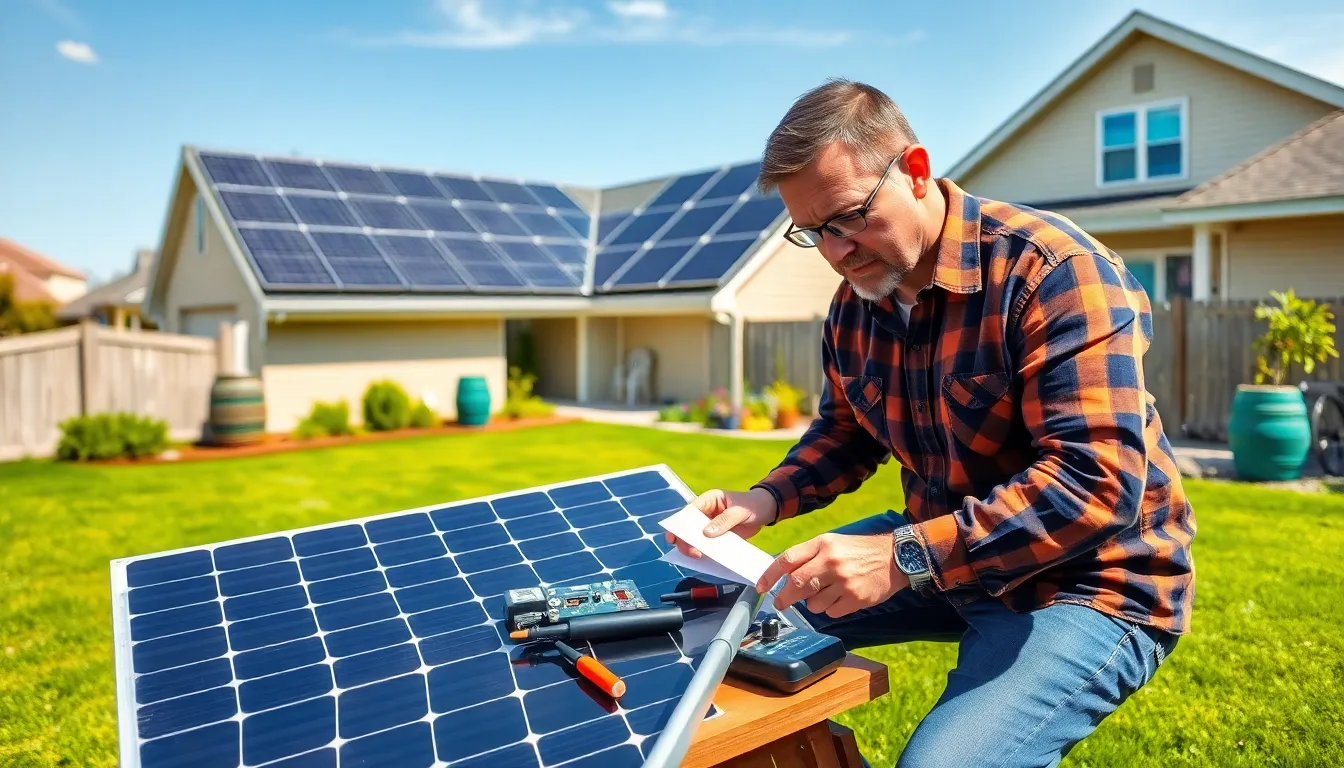In an era marked by rising energy costs and increasing ecological awareness, DIY solar solutions stand out as a beacon of hope for environmentally conscious homeowners. With a bit of guidance and the right tools, anyone can transform their home into a model of energy efficiency. Adding to this synergy is the curious role of the pangolin, not only as a symbol of sustainability but also as a reminder of the intricate balance of nature. This article will discover the realm of DIY solar installations, the benefits they offer, the significance of the pangolin in sustainability, and considerations for integrating solar technology into real estate considerations.
Table of Contents
ToggleUnderstanding DIY Solar Solutions

DIY solar solutions allow homeowners to harness renewable energy without the need for extensive professional installation. By utilizing kits and components available on the market, they can take charge of their energy production, often at a fraction of the cost of conventional installations. These systems typically consist of solar panels, inverters, batteries, and mounting equipment. The growing availability of online tutorials and community forums has made it easier for individuals to learn about, assemble, and install their systems, paving the way for a solar-powered future.
Benefits of DIY Solar Installation
The benefits of DIY solar installation extend beyond mere cost savings. Firstly, it empowers homeowners with control over their energy resources. They gain a sense of independence from utility companies and can produce their energy efficiently. Secondly, the environmental impacts are significant. By opting for solar, individuals contribute to reducing greenhouse gas emissions, so playing a part in combating climate change. Also, DIY installations may increase property value, as homes equipped with solar systems are often seen as more desirable. Finally, home solar projects can lead to a sense of community, as neighbors often share knowledge and resources.
The Role of the Pangolin in Sustainability
Pangolins, unique and endangered creatures, serve as an unexpected mascot for sustainability. Their diet consists primarily of ants and termites, which helps to maintain ecological balance. When discussing solar energy, the connection may seem tenuous: but, the pangolin’s plight highlights the importance of biodiversity and conservation efforts in tandem with renewable energy initiatives. Every step toward constructing a solar home is also a step toward protecting our planet’s diverse ecosystems.
Steps to Building Your Own Solar Panels
Building solar panels requires several steps, beginning with gathering materials like photovoltaic cells, a plywood base, and protective glass. Each panel should be constructed to maximize sunlight exposure, ideally oriented southward in the Northern Hemisphere.
Choosing the Right Equipment
Selecting the right equipment is crucial for efficiency. Homeowners should consider factors such as energy needs, roof space, and budget. Investing in high-quality solar panels and inverters can lead to greater long-term savings.
Installation Process Overview
The installation process involves mounting the panels securely on the roof, connecting them to an inverter, and ensuring proper wiring to the home’s electrical system. This stage requires careful planning and adherence to local building codes.
Maintaining Your Solar System
Maintenance is key to ensuring that DIY solar systems operate at peak efficiency. Regular cleaning of the panels is essential, as dust and debris can block sunlight absorption. Seasonal inspections can catch potential issues early, such as wear on wiring or panel damage. Homeowners should also monitor the system’s output through available software platforms, ensuring that energy production remains consistent. A well-maintained system can continue to generate power effectively for years, maximizing return on investment.
Real Estate Considerations for Solar Homes
As the demand for sustainable living increases, the real estate market is rapidly adapting. Homes equipped with solar technology often see a boost in property value, making them attractive to prospective buyers. HomeRocket Realty asserts that buyers increasingly prioritize energy-efficient features. But, sellers must provide documentation of the system’s efficiency and maintenance history to ensure transparency. Besides, understanding local regulations and incentives related to solar installations is essential for both buyers and sellers, as these can significantly impact property investments.
Conclusion
Summarizing, embarking on a DIY solar project not only equips homeowners with energy independence but also contributes to a collective effort toward sustainable living. As they embrace the potential of solar power, they should consider the ecological significance highlighted by creatures like the pangolin. Eventually, with thoughtful installation and maintenance of solar systems, homeowners can enjoy the dual benefits of reduced energy costs and improved environmental stewardship.








